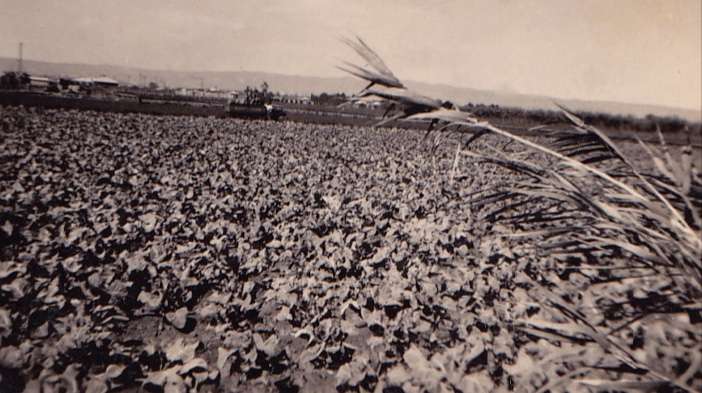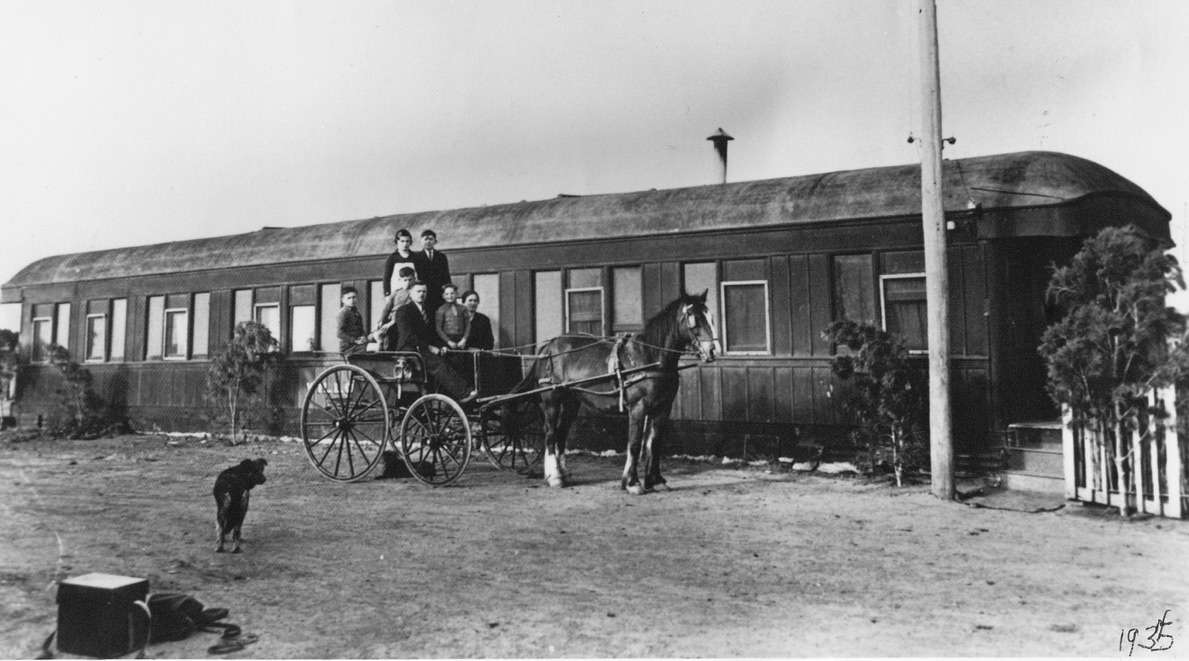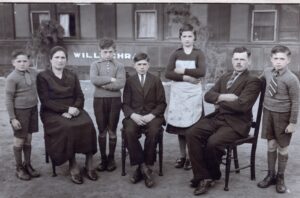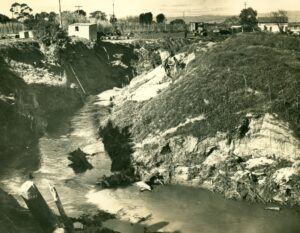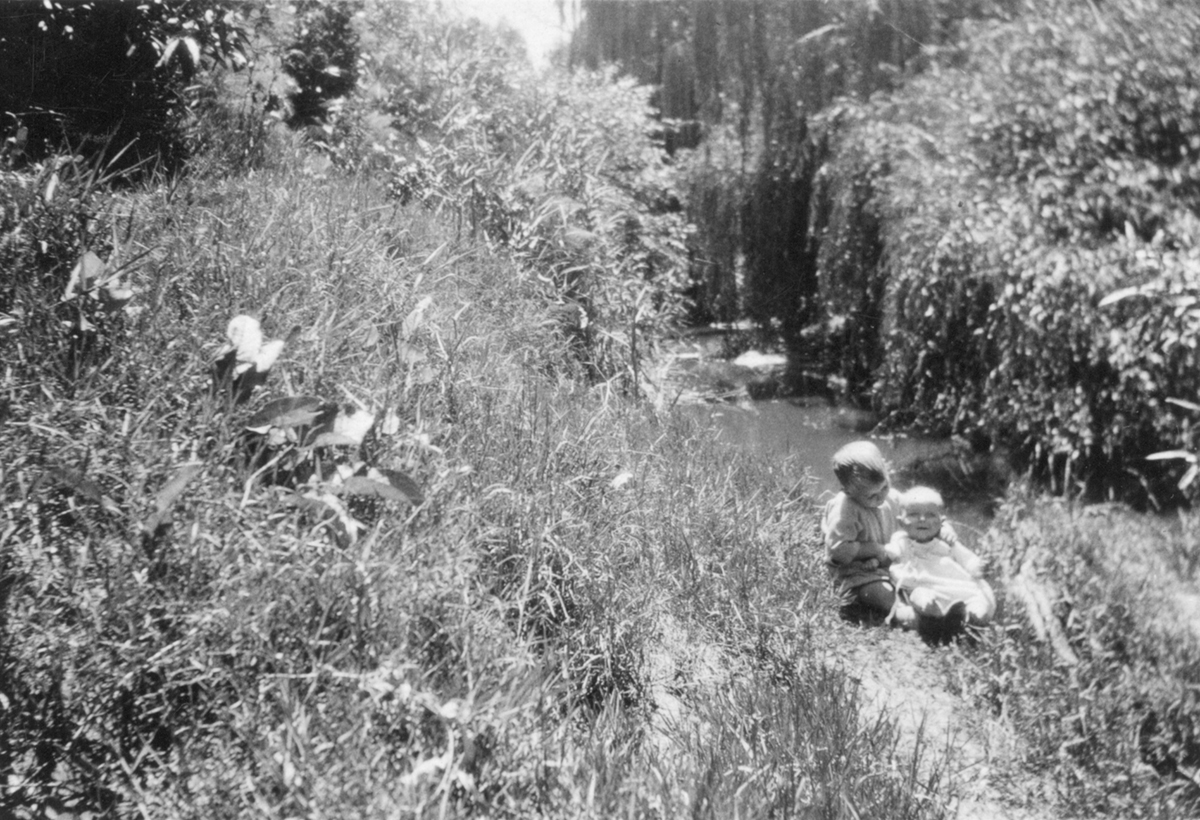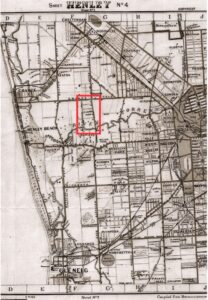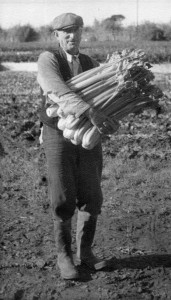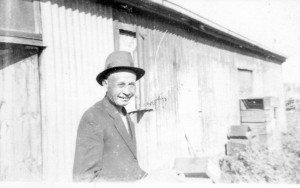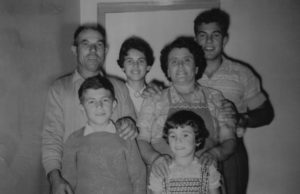In this blog I use quotes from some people interviewed for the Veneto market gardeners’ oral history project to explore the significance of water. The River Torrens provided a reliable source of water for some, while others whose land was further away, used bores for watering their vegetable crops. Those who lived close to the river grew vegetables like celery that need abundant water. After the flood mitigation scheme was complete in the late 1930s, flooding reduced, and market gardeners could grow tomatoes and beans in glasshouses and ‘outside’ vegetables like onions, carrots, beetroot, trombones and potatoes. As well as being essential for growing vegetables, the river also became a playground for children of market gardeners

Irrigation from the river
… no restrictions at all in those days.
The only thing it was that there was so many market gardeners on the river that the water went down and especially in the summer time and you only had holes here and there where your pump was … the river would get that low they used to ring up E&WS [Engineering and Water Supply] in those days and let down two inches of water out of the lake and that would fill up all the holes down the river because it was all full of holes especially on the big bends on the river that washed out the river and there would be a big hole there. … some holes would be about ten feet or more.
Rae Ballantyne OH 87221, 25 August 2012, pp 10-11.
Digging bores
Lino Tonellato arrived as a child in 1935 and remembered that his father and Mr Angelo Piovesan dug a bore on the land at Frogmore Road in the 1930s:
We had, they had put a bore in, they did it themselves, they dug out a hole and put a bore in and they found the water and therefore we were using beautiful water, even better than the tap water it was in them days, until the casing went broke, it was rusty, and then it was a bit salty, but before that it was beautiful water. We used to drink that water instead of the tap water.
Lino Tonellato OH 872/10 16 July 2010, pp 5-6.
The depth of bores
Mel Recchi, whose parents had a market garden on Findon Road, explained the ways that market gardeners depended on different sources of water:
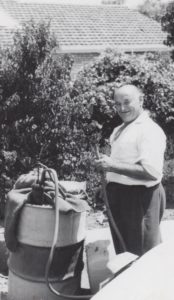
Most of them had bore water … I think the water table is only down about 15 or 20 feet … But you might put a pump down, might go down to 40, 50 feet, maybe 60 feet, at the most. [Our] bore was here when we came. And the pump was virtually, approximately 20 feet underground so we dug down, well when they put it down, they would have dug down and shored it up with timber and the pump was about 20 feet below ground level with a pipe going in another 25, 30 feet to get to the water, to get to the water basin.
Mel Recchi OH 872/31, 18 June 2014, p 16.
Salt in the water
Anna Santin nee Mattiazzo, who worked with her sisters-in-law on the Santin brothers market garden on Frogmore Road, raised an interesting point about the quality of the bore water:
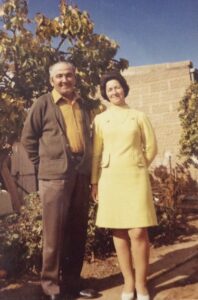
… you used to have to keep an eye on it then. If it got too salty you couldn’t use it and so, we had to bore another one after a few years, a new one, and they used to have to keep an eye on it. Otherwise, it would be too salty and burn all the plants.
Anna Santin nee Mattiazzo OH 872/24 3 April 2013, p 26.
The bore as protection from the heat
Johnny Marchioro explained the necessity for market gardeners, like his parents, to have a bore and remembered that they used the bore for another purpose in the Adelaide summer heat:
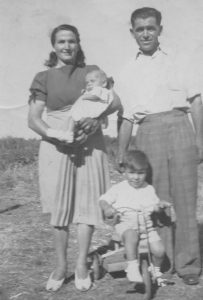
They had to have a bore because your tap, mains water – would have been dear at the time, too – but you wouldn’t have got enough water to water these acres of your glasshouses and outside vegetables … when it was real hot they used to go and cool down in this well. The well was about a four-foot hole, about twenty foot deep and it was padded up with timber that went down there, … I don’t know how they got that done back in the ’30s.
Johnny Marchioro OH 872/1, 21 July 2008, p 23.
The river as play space
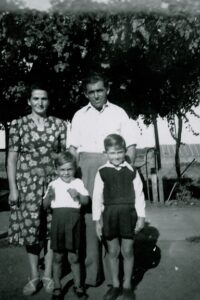
Romano Marchioro remembered the River Torrens as a place of play and adventure:
I spent half of my younger years in the river, River Torrens. And some of the bigger boys used to come there and we used to go fishing. and we used to … In those days it used to run dry in a lot of places and there’d be big pools of water and we’d all get there with buckets and throw all the water out and all the fish would be down in the bottom and all the yabbies would crawl out the sides of the banks. And we’d end up with heaps of yabbies and fish … There used to be perch. And congollis, long skinny fish. They were edible fish … I used to go always go yabbying and bring them home … we used to have fun.
Romano Marchioro, OH 872/20, 11 June 2012, p 8.
The full transcripts of the interviews can be found on the respective family pages of the website.
Madeleine Regan
20 March 2020
